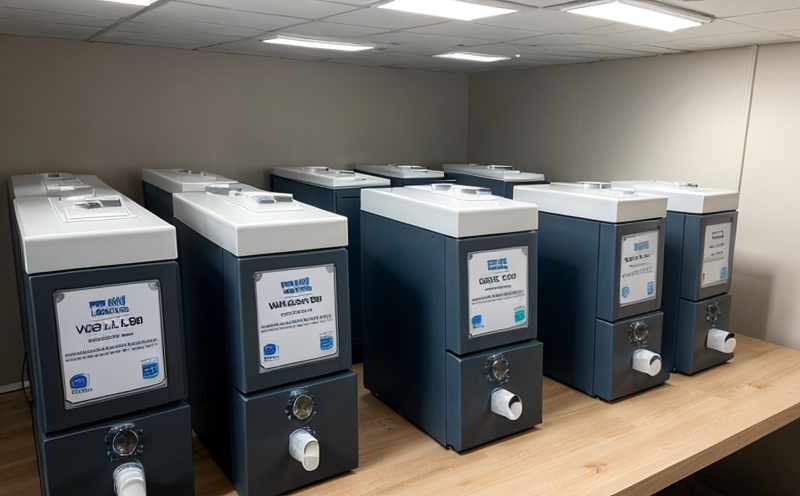Emission testing of babywear fabrics for chemical safety
When it comes to ensuring the well-being and health of infants, no detail is too small. Babywear fabrics are a critical component in this equation as they come into direct contact with an infant's delicate skin. Formaldehyde and Volatile Organic Compounds (VOCs) can pose significant risks if not properly managed, making emission testing essential for chemical safety.
Formaldehyde is known to cause allergic dermatitis and other skin irritations, while certain VOCs are linked to respiratory issues and adverse health effects. Testing these compounds in babywear fabrics ensures that the products meet strict safety standards and are free from harmful chemicals. This testing process typically involves sampling the fabric, preparing it for analysis, and then using advanced analytical instruments to measure formaldehyde and VOC emissions.
Our laboratory employs state-of-the-art equipment such as gas chromatography-mass spectrometry (GC-MS) and high-performance liquid chromatography (HPLC) to accurately quantify these compounds. The testing process follows international standards like ISO 14925 for formaldehyde in textiles and ASTM D3960 for VOCs, ensuring consistency and reliability.
Our service includes a comprehensive approach from sample preparation through final analysis and reporting. After receiving the fabric samples, our team meticulously prepares them according to standard procedures. This may involve soaking the fabrics in water, drying them under specific conditions, or subjecting them to heat cycling to simulate real-world exposure scenarios.
Once prepared, the specimens are analyzed using precise methods that account for both short-term and long-term emissions. For formaldehyde testing, we use a heated oven method where the sample is exposed to controlled temperatures over time, allowing the formaldehyde to be released into a solution where it can be accurately measured. Similarly, for VOCs, headspace sampling coupled with GC-MS analysis provides precise quantification.
The results of these tests are meticulously documented and compared against international standards. Compliance is determined by whether the levels of formaldehyde or VOCs fall within acceptable limits set forth by regulatory bodies such as the European Union (REACH) and U.S. Consumer Product Safety Commission (CPSC).
Our service not only ensures compliance with these regulations but also goes beyond basic requirements to provide valuable insights into the chemical composition of babywear fabrics. This information can be crucial for product development, quality assurance, and ensuring a safe environment for infants.
- Comprehensive Sample Preparation: We follow strict protocols to ensure accurate and consistent results.
- Advanced Analytical Instruments: Utilizing top-tier equipment like GC-MS and HPLC ensures precise measurement of emissions.
- International Compliance: Results are aligned with global standards such as ISO 14925 and ASTM D3960.
We understand the importance of this service in safeguarding infant health. By providing reliable, accurate testing, we contribute to creating safer babywear products that meet the highest safety standards.
Benefits
The benefits of our emission testing for babywear fabrics are multifaceted and extend beyond mere compliance with regulations. First and foremost, it ensures the chemical safety of the products, reducing the risk of skin irritations and other health issues in infants.
For quality managers and R&D engineers, this service provides critical data that can inform product development processes. By identifying potential issues early on, they can make necessary adjustments to fabric formulations or production methods. This proactive approach helps in maintaining a high standard of product quality and reliability.
Compliance officers also benefit greatly from our testing as it offers them the peace of mind knowing that their products meet all required standards. It eliminates the risk of recalls, legal actions, and reputational damage associated with non-compliant products. For procurement teams, this service ensures they are sourcing materials from suppliers who adhere to strict chemical safety protocols.
In addition to these direct benefits, our testing also contributes to environmental sustainability by promoting the use of safer chemicals in textile production. By reducing harmful emissions, we help create a more sustainable and healthier environment for all.
Quality and Reliability Assurance
The reliability and accuracy of our testing are paramount to ensuring that babywear fabrics meet the highest standards of chemical safety. We maintain a robust quality assurance process that includes regular calibration of equipment, strict adherence to standard operating procedures, and ongoing training for our staff.
Our team of experts ensures that every step of the testing process is followed meticulously, from sample preparation through final analysis. This rigorous approach guarantees consistent and reliable results. Additionally, we participate in proficiency testing programs regularly to validate the accuracy and precision of our methods.
We also employ advanced statistical techniques to analyze data and ensure that any potential anomalies are identified early on. This proactive stance allows us to continuously improve our testing capabilities and maintain a high level of quality assurance.
Environmental and Sustainability Contributions
Beyond the immediate benefits of ensuring chemical safety in babywear fabrics, this service also contributes positively to environmental sustainability. By promoting the use of safer chemicals in textile production, we help reduce harmful emissions into the environment.
This commitment to sustainability extends to our operational practices as well. We strive to minimize waste and energy consumption while maximizing efficiency in all aspects of our laboratory operations. Through these efforts, we aim to create a more sustainable future for everyone involved in the textile industry.





